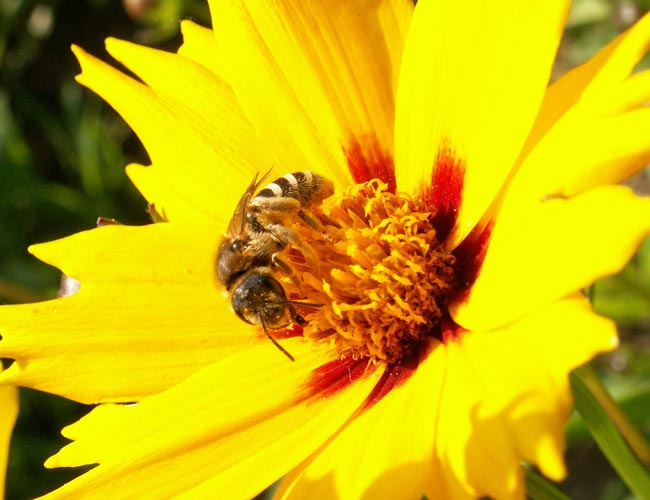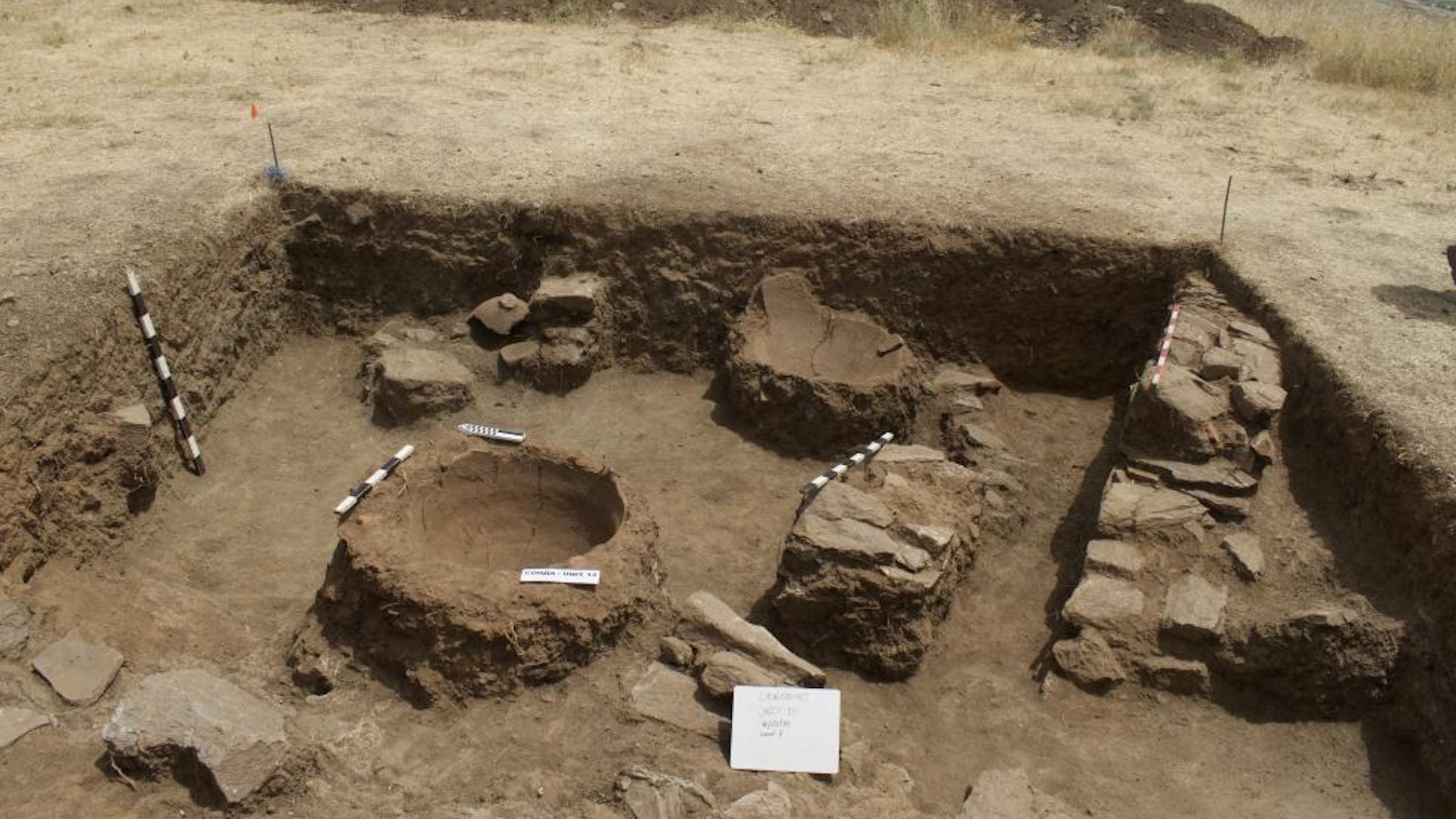Bees Get a Buzz from Flowers' Electrical Fields

Everyone knows that bees buzz around flowers in their quest for nectar. But scientists have now learned that flowers are buzzing right back — with electricity.
Plants generally have a negative electrical charge and emit a weak electrical signal, according to researchers at the University of Bristol in England. And scientists have known for years that bees' flapping wings create a positive electrical charge of up to 200 volts as they flit from flower to flower, according to a news release.
But can the bees detect flowers' electrical charge? While animals like sharks are known to sense electrical fields, nobody had ever found that an insect could do the same, ScientificAmerican reports.
To test the bees' sensitivity, researchers filled a room with artificial flowers: Half of the flowers were electrically charged and carried a sugary reward, while the other half had no charge and a bitter solution of quinine.
The bees quickly learned to visit only the electrically charged flowers, and to not waste their energy visiting flowers with no electrical charge. But when the electrical charges were switched off, the bees once again visited flowers randomly, suggesting that they had been reacting to the electrical charges. [The 10 Weirdest Animal Discoveries]
"Animals are just constantly surprising us as to how good their senses are," Dominic Clarke, lead author of the study, published in journal Science, told the BBC. "More and more we're starting to see that nature's senses are almost as good as they could possibly be."
Bees and flowers, of course, co-evolved with a long-standing symbiotic relationship: The bees depend on flowers for nectar, which they use to produce honey, and flowers need bees to help pollinate other flowers.
Sign up for the Live Science daily newsletter now
Get the world’s most fascinating discoveries delivered straight to your inbox.
Flowers use various means to attract bees and other pollinators. In addition to their electrical charge and alluring fragrance, flowers display bright colors — and research has found that bees see colors three times faster than humans.
But bees — busy as they famously are — don't have time to waste visiting pretty flowers whose nectar has just been taken by another insect. "The last thing a flower wants is to attract a bee and then fail to provide nectar," said Daniel Robert, co-author of the study, in a statement. "Bees are good learners and would soon lose interest in such [an] unrewarding flower."
So flowers, the researchers confirmed, emit a different electrical signal after their nectar has been harvested. They found that petunias became slightly more positively charged after a bee visited them, according to ScientificAmerican.
That revised electrical charge acts as a kind of "No Vacancy" sign to other bees, which learn to trust the signals that the flowers emit.
"This is a magnificent interaction where you have an animal and a plant, and they both want this to go as well as possible," study co-author Gregory Sutton told NPR. "The flowers are trying to make themselves look as different as possible. This is to establish the flower's brand."
How do bees sense an electrical charge? Researchers aren't sure, but they suspect the fuzzy hairs on bees' bodies "bristle up" under an electrostatic force, just like human hair in front of a television screen.
Other scientists are excited about the possible implications this research may have for other nectar-gathering insects such as hoverflies and moths.
"We had no idea that this sense even existed," Thomas Seeley, a behavioral biologist at Cornell University, told ScientificAmerican. "Assuming we can replicate the findings, this is going to open up a whole new window on insect sensory systems."
Contact Marc Lallanilla at mlallanilla@techmedianetwork.com. Follow him on Twitter @MarcLallanilla. Follow LiveScience on Twitter @livescience. We're also on Facebook & Google+.










